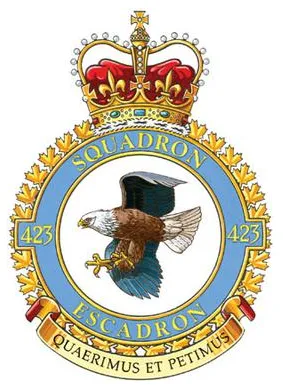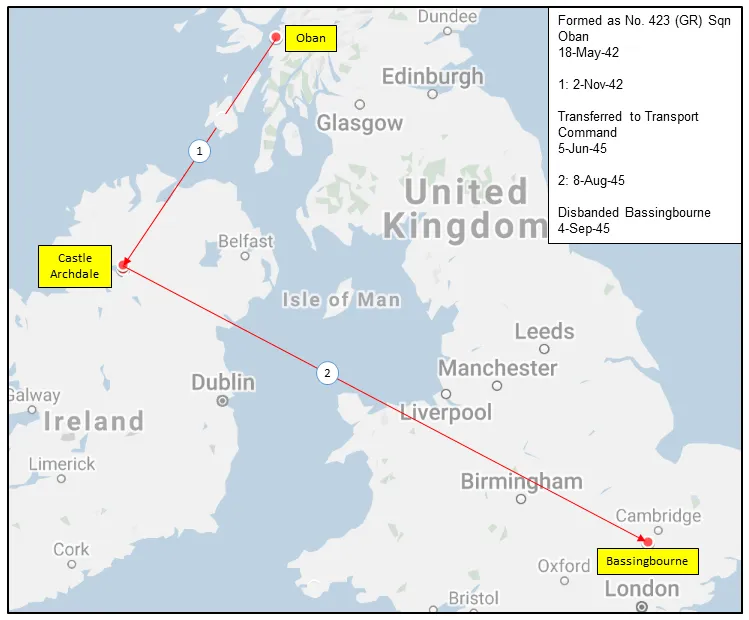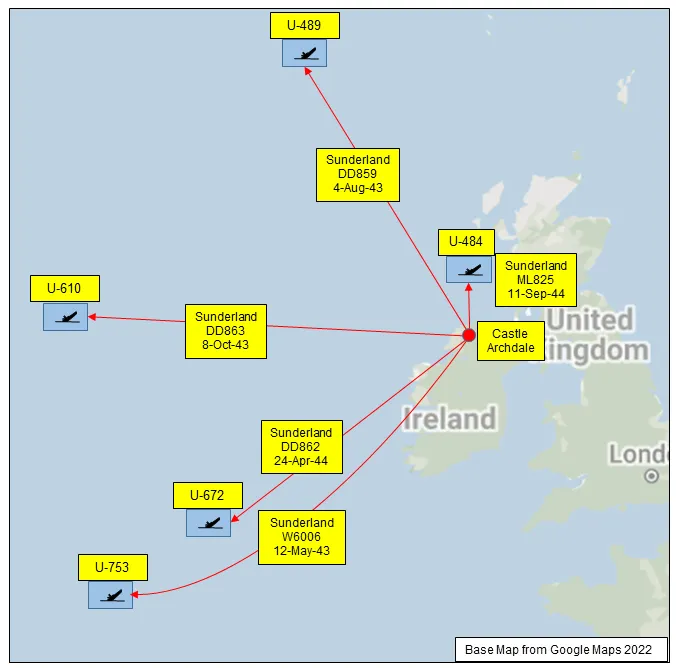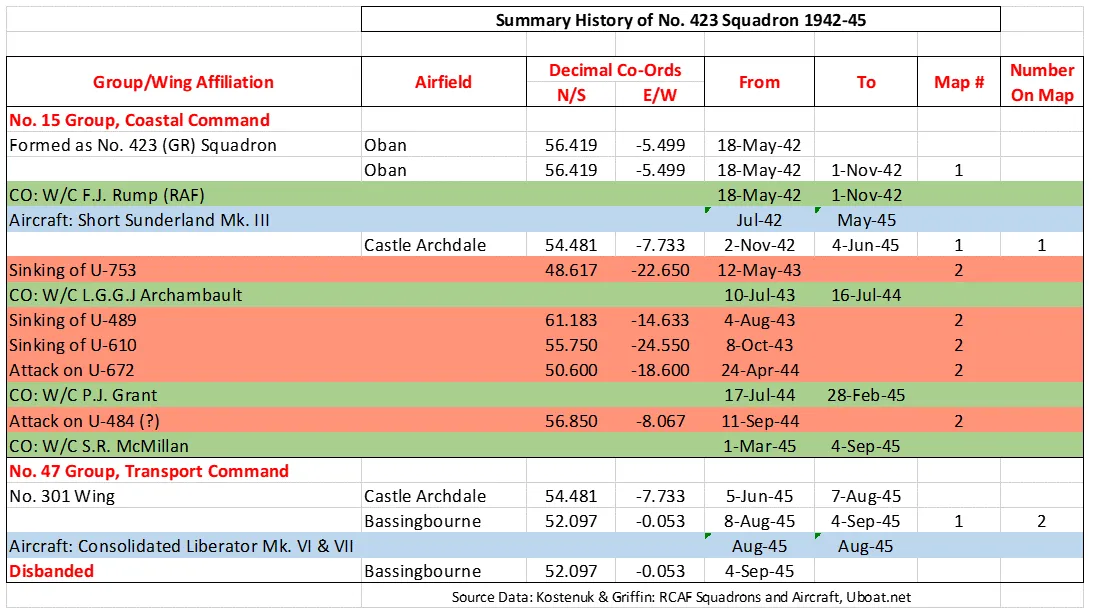History of the Squadron during World War II (Aircraft: Sunderland III, Liberator VI, VII)

The squadron was formed as a General Reconnaissance unit at Oban, Scotland ![]() , on 18 May 1942. It was the RCAF's 21st, and sixth and last Coastal squadron formed overseas in WWII. The unit flew Short Sunderland flying boats as convoy escorts and on anti-U-boat missions. It remained at Oban until November 1942, when it transferred to Castle Archdale in Northern Ireland
, on 18 May 1942. It was the RCAF's 21st, and sixth and last Coastal squadron formed overseas in WWII. The unit flew Short Sunderland flying boats as convoy escorts and on anti-U-boat missions. It remained at Oban until November 1942, when it transferred to Castle Archdale in Northern Ireland ![]() .
.
When hostilities terminated in Europe, the squadron was re-designated as a Transport unit and was slated to move to the Far East as part of the "Tiger Force" that was assembling to carry on the war with Japan. To this end, the squadron was equipped with Consolidated Liberator aircraft, but the termination of hostilities with Japan meant that the squadron was no longer required in the transport role, and it was disbanded at Bassingbourn, Cambridgeshire, England ![]() , on September 4, 1945.
, on September 4, 1945.
The squadron claimed the sinking of a number of U-boats. Flight Lieutenant J. Musgrave and crew shared with destroyers HMCS Drumheller and HMS Lagan the sinking of what was thought to be U-456 on May 12, 1943 (later research established that the U-boat sunk was U-753, see link below). On August 4, 1943, Flying Officer A.A. Bishop and crew sank U-489; on October 8. 1943 Flying Officer A.H. Russell and crew sank U-610; on April 24, 1944 Flying Officer F.G. Fellows and crew sank U-311 (later research showed that the boat attacked was U672, see link below, and that it was damaged but not sunk); on September 11, 1944 it was claimed that Flying Officer J.N. Farren and crew shared in the sinking of U-484 with HMCS Dunver and HMCS Hespeler. Later research showed that this was probably a non-submarine target (see link below). In the course of the war, the squadron won 4 DFCs and 1 DFM. Battle Honours were: Atlantic 1942-45, English Channel and North Sea 1944-45, Normandy 1944, Biscay 1944.Wikipedia, Kostenuk and Griffin, uboat.net
Maps for Movements of 423 Squadron 1942-45

MAP 1: 423 Squadron Movements 1942-45 (right-click on image to display enlarged in new tab)
|

MAP 2: 423 Squadron U-boat sinkings 1943-44
|
423 Squadron History Summary 1942-45


